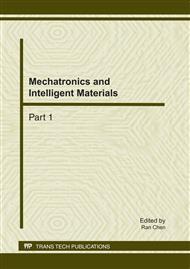p.1182
p.1189
p.1194
p.1199
p.1204
p.1210
p.1216
p.1221
p.1226
State of Charge (SOC) Estimation of Ni-MH Battery Based on Least Square Support Vector Machines
Abstract:
This paper presents a new method to estimate the state of charge (SOC) of Ni-MH battery pack in hybrid electric vehicles (HEV). The proposed method establishes the relationship of the SOC to the battery’s voltage, current and temperature by using least square support vector machines (LS-SVM). According to the nonlinear characteristics of a battery pack system, the nonlinear SVM with polynomial kernel are developed for the estimation of the SOC with LS-SVM algorithm. To be more efficient in application, this method is also simplified in this paper. The results have conformed that the proposed method is able to estimate the SOC of Ni-MH battery with high accuracy and noise tolerating ability.
Info:
Periodical:
Pages:
1204-1209
Citation:
Online since:
February 2011
Authors:
Keywords:
Price:
Сopyright:
© 2011 Trans Tech Publications Ltd. All Rights Reserved
Share:
Citation:


